 Overview of the SONA and Borderless Networks
Overview of the SONA and Borderless Networks
![]() Proper network architecture helps ensure that business strategies and IT investments are aligned. As the backbone for IT communications, the network element of enterprise architecture is increasingly critical. Service-Oriented Network Architecture (SONA) is the Cisco architectural approach to designing advanced network capabilities.
Proper network architecture helps ensure that business strategies and IT investments are aligned. As the backbone for IT communications, the network element of enterprise architecture is increasingly critical. Service-Oriented Network Architecture (SONA) is the Cisco architectural approach to designing advanced network capabilities.
![]() Figure 1-11 illustrates SONA pictorially from a marketing perspective.
Figure 1-11 illustrates SONA pictorially from a marketing perspective.
![]() SONA provides guidance, best practices, and blueprints for connecting network services and applications to enable business solutions. The SONA framework illustrates the concept that the network is the common element that connects and enables all components of the IT infrastructure. SONA outlines these three layers of intelligence in the enterprise network:
SONA provides guidance, best practices, and blueprints for connecting network services and applications to enable business solutions. The SONA framework illustrates the concept that the network is the common element that connects and enables all components of the IT infrastructure. SONA outlines these three layers of intelligence in the enterprise network:
-
 The Networked Infrastructure Layer: Where all the IT resources are interconnected across a converged network foundation. The IT resources include servers, storage, and clients. The network infrastructure layer represents how these resources exist in different places in the network, including the campus, branch, data center, WAN, metropolitan-area network (MAN), and telecommuter. The objective for customers in this layer is to have anywhere and anytime connectivity.
The Networked Infrastructure Layer: Where all the IT resources are interconnected across a converged network foundation. The IT resources include servers, storage, and clients. The network infrastructure layer represents how these resources exist in different places in the network, including the campus, branch, data center, WAN, metropolitan-area network (MAN), and telecommuter. The objective for customers in this layer is to have anywhere and anytime connectivity. -
 The Interactive Services Layer: Enables efficient allocation of resources to applications and business processes delivered through the networked infrastructure.
The Interactive Services Layer: Enables efficient allocation of resources to applications and business processes delivered through the networked infrastructure. -
 The Application Layer: Includes business applications and collaboration applications. The objective for customers in this layer is to meet business requirements and achieve efficiencies by leveraging the interactive services layer.
The Application Layer: Includes business applications and collaboration applications. The objective for customers in this layer is to meet business requirements and achieve efficiencies by leveraging the interactive services layer.
![]() The common thread that links the layers is SONA embeds application-level intelligence into the network infrastructure elements so that the network can recognize and better support applications and services.
The common thread that links the layers is SONA embeds application-level intelligence into the network infrastructure elements so that the network can recognize and better support applications and services.
![]() Deploying a campus design based on the Cisco SONA framework yields several benefits:
Deploying a campus design based on the Cisco SONA framework yields several benefits:
-
 Convergence, virtualization, intelligence, security, and integration in all areas of the network infrastructure: The Cisco converged network encompasses all IT technologies, including computing, data, voice, video, and storage. The entire network now provides more intelligence for delivering all applications, including voice and video. Employees are more productive because they can use a consistent set of Unified Communications tools from almost anywhere in the world.
Convergence, virtualization, intelligence, security, and integration in all areas of the network infrastructure: The Cisco converged network encompasses all IT technologies, including computing, data, voice, video, and storage. The entire network now provides more intelligence for delivering all applications, including voice and video. Employees are more productive because they can use a consistent set of Unified Communications tools from almost anywhere in the world. -
 Cost savings: With the Cisco SONA model, the network offers the power and flexibility to implement new applications easily, which reduces development and implementation costs. Common network services are used on an as-needed basis by voice, data, and video applications.
Cost savings: With the Cisco SONA model, the network offers the power and flexibility to implement new applications easily, which reduces development and implementation costs. Common network services are used on an as-needed basis by voice, data, and video applications. -
 Increased productivity: Collaboration services and product features enable employees to share multiple information types on a rich-media conferencing system. For example, agents in contact centers can share a Web browser with a customer during a voice call to speed up problem resolution and increase customer knowledge using a tool such as Cisco WebEX. Collaboration has enabled contact center agents to reduce the average time spent on each call, yet receive higher customer satisfaction ratings. Another example is cost saving associated with hosting virtual meetings using Cisco WebEx.
Increased productivity: Collaboration services and product features enable employees to share multiple information types on a rich-media conferencing system. For example, agents in contact centers can share a Web browser with a customer during a voice call to speed up problem resolution and increase customer knowledge using a tool such as Cisco WebEX. Collaboration has enabled contact center agents to reduce the average time spent on each call, yet receive higher customer satisfaction ratings. Another example is cost saving associated with hosting virtual meetings using Cisco WebEx. -
 Faster deployment of new services and applications: Organizations can better deploy services for interactive communications through virtualization of storage, cloud computing, and other network resources. Automated processes for provisioning, monitoring, managing, and upgrading voice products and services help Cisco IT achieve greater network reliability and maximize the use of IT resources. Cloud computing is the next wave of new technology to be utilized in enterprise environments.
Faster deployment of new services and applications: Organizations can better deploy services for interactive communications through virtualization of storage, cloud computing, and other network resources. Automated processes for provisioning, monitoring, managing, and upgrading voice products and services help Cisco IT achieve greater network reliability and maximize the use of IT resources. Cloud computing is the next wave of new technology to be utilized in enterprise environments. -
 Enhanced business processes: With the SONA, IT departments can better support and enhance business processes and resilience through integrated applications and intelligent network services. Examples include change-control processes that enable 99.999 percent of network uptimes.
Enhanced business processes: With the SONA, IT departments can better support and enhance business processes and resilience through integrated applications and intelligent network services. Examples include change-control processes that enable 99.999 percent of network uptimes.
![]() Keep in mind, SONA is strictly a model to guide network designs. When designing the campus portion of the enterprise network, you need to understand SONA only from a high level as most of the focus of the campus design is centered on features and functions of Cisco switching.
Keep in mind, SONA is strictly a model to guide network designs. When designing the campus portion of the enterprise network, you need to understand SONA only from a high level as most of the focus of the campus design is centered on features and functions of Cisco switching.
![]() Cisco.com contains additional information and readings on SONA for persons seeking more details.
Cisco.com contains additional information and readings on SONA for persons seeking more details.
![]() In October 2009, Cisco launched a new enterprise architecture called Borderless Networks. As with SONA, the model behind Borderless Networks enables businesses to transcend borders, access resources anywhere, embrace business productivity, and lower business and IT costs. One enhancement added to Borderless Networks over SONA is that the framework focuses more on growing enterprises into global companies, noted in the term “borderless.” In terms of CCNP SWITCH, focus on a high-level understanding of SONA because Borderless Networks is a new framework. Consult Cisco.com for additional information on Borderless Networks.
In October 2009, Cisco launched a new enterprise architecture called Borderless Networks. As with SONA, the model behind Borderless Networks enables businesses to transcend borders, access resources anywhere, embrace business productivity, and lower business and IT costs. One enhancement added to Borderless Networks over SONA is that the framework focuses more on growing enterprises into global companies, noted in the term “borderless.” In terms of CCNP SWITCH, focus on a high-level understanding of SONA because Borderless Networks is a new framework. Consult Cisco.com for additional information on Borderless Networks.
![]() In review, SONA and Borderless Networks are marketing architectures that form high-level frameworks for designing networks. For the purpose of designing a campus network, focus on terms from building requirements around traffic flow, scale, and general requirements. The next section applies a life-cycle approach to campus design and delves into more specific details about the campus designs.
In review, SONA and Borderless Networks are marketing architectures that form high-level frameworks for designing networks. For the purpose of designing a campus network, focus on terms from building requirements around traffic flow, scale, and general requirements. The next section applies a life-cycle approach to campus design and delves into more specific details about the campus designs.
Enterprise Campus Design
![]() The next subsections detail key enterprise campus design concepts. The access, distribution, and core layers introduced earlier in this chapter are expanded on with applied examples. Later subsections of this chapter define a model for implementing and operating a network.
The next subsections detail key enterprise campus design concepts. The access, distribution, and core layers introduced earlier in this chapter are expanded on with applied examples. Later subsections of this chapter define a model for implementing and operating a network.
![]() The tasks of implementing and operating a network are two components of the Cisco Lifecycle model. In this model, the life of the network and its components are taught with a structural angle, starting from the preparation of the network design to the optimization of the implemented network. This structured approach is key to ensure that the network always meets the requirements of the end users. This section describes the Cisco Lifecycle approach and its impact on network implementation.
The tasks of implementing and operating a network are two components of the Cisco Lifecycle model. In this model, the life of the network and its components are taught with a structural angle, starting from the preparation of the network design to the optimization of the implemented network. This structured approach is key to ensure that the network always meets the requirements of the end users. This section describes the Cisco Lifecycle approach and its impact on network implementation.
![]() The enterprise campus architecture can be applied at the campus scale, or at the building scale, to allow flexibility in network design and facilitate ease of implementation and troubleshooting. When applied to a building, the Cisco Campus Architecture naturally divides networks into the building access, building distribution, and building core layers, as follows:
The enterprise campus architecture can be applied at the campus scale, or at the building scale, to allow flexibility in network design and facilitate ease of implementation and troubleshooting. When applied to a building, the Cisco Campus Architecture naturally divides networks into the building access, building distribution, and building core layers, as follows:
-
 Building access layer: This layer is used to grant user access to network devices. In a network campus, the building access layer generally incorporates switched LAN devices with ports that provide connectivity to workstations and servers. In the WAN environment, the building access layer at remote sites can provide access to the corporate network across WAN technology.
Building access layer: This layer is used to grant user access to network devices. In a network campus, the building access layer generally incorporates switched LAN devices with ports that provide connectivity to workstations and servers. In the WAN environment, the building access layer at remote sites can provide access to the corporate network across WAN technology. -
 Building distribution layer: Aggregates the wiring closets and uses switches to segment workgroups and isolate network problems.
Building distribution layer: Aggregates the wiring closets and uses switches to segment workgroups and isolate network problems. -
 Building core layer: Also known as the campus backbone, this is a high-speed backbone designed to switch packets as fast as possible. Because the core is critical for connectivity, it must provide a high level of availability and adapt to changes quickly.
Building core layer: Also known as the campus backbone, this is a high-speed backbone designed to switch packets as fast as possible. Because the core is critical for connectivity, it must provide a high level of availability and adapt to changes quickly.
![]() Figure 1-12 illustrates a sample enterprise network topology that spans multiple buildings.
Figure 1-12 illustrates a sample enterprise network topology that spans multiple buildings.
![]() The enterprise campus architecture divides the enterprise network into physical, logical, and functional areas. These areas enable network designers and engineers to associate specific network functionality on equipment based upon its placement and function in the model.
The enterprise campus architecture divides the enterprise network into physical, logical, and functional areas. These areas enable network designers and engineers to associate specific network functionality on equipment based upon its placement and function in the model.
 Access Layer In-Depth
Access Layer In-Depth
![]() The building access layer aggregates end users and provides uplinks to the distribution layer. With the proper use of Cisco switches, the access layer may contain the following benefits:
The building access layer aggregates end users and provides uplinks to the distribution layer. With the proper use of Cisco switches, the access layer may contain the following benefits:
-
 High availability: The access layer is supported by many hardware and software features. System-level redundancy using redundant supervisor engines and redundant power supplies for critical user groups is an available option within the Cisco switch portfolio. Moreover, additional software features of Cisco switches offer access to default gateway redundancy using dual connections from access switches to redundant distribution layer switches that use first-hop redundancy protocols (FHRP) such as the hot standby routing protocol (HSRP). Of note, FHRP and HSRP features are supported only on Layer 3 switches; Layer 2 switches do not participate in HSRP and FHRP and forwarding respective frames.
High availability: The access layer is supported by many hardware and software features. System-level redundancy using redundant supervisor engines and redundant power supplies for critical user groups is an available option within the Cisco switch portfolio. Moreover, additional software features of Cisco switches offer access to default gateway redundancy using dual connections from access switches to redundant distribution layer switches that use first-hop redundancy protocols (FHRP) such as the hot standby routing protocol (HSRP). Of note, FHRP and HSRP features are supported only on Layer 3 switches; Layer 2 switches do not participate in HSRP and FHRP and forwarding respective frames. -
 Convergence: Cisco switches deployed in an access layer optionally support inline Power over Ethernet (PoE) for IP telephony and wireless access points, enabling customers to converge voice onto their data network and providing roaming WLAN access for users.
Convergence: Cisco switches deployed in an access layer optionally support inline Power over Ethernet (PoE) for IP telephony and wireless access points, enabling customers to converge voice onto their data network and providing roaming WLAN access for users. -
 Security: Cisco switches used in an access layer optionally provide services for additional security against unauthorized access to the network through the use of tools such as port security, DHCP snooping, Dynamic Address Resolution Protocol (ARP) Inspection, and IP Source Guard. These features are discussed in later chapters of this book.
Security: Cisco switches used in an access layer optionally provide services for additional security against unauthorized access to the network through the use of tools such as port security, DHCP snooping, Dynamic Address Resolution Protocol (ARP) Inspection, and IP Source Guard. These features are discussed in later chapters of this book.
![]() Figure 1-13 illustrates the use of access layer deploying redundant upstream connections to the distribution layer.
Figure 1-13 illustrates the use of access layer deploying redundant upstream connections to the distribution layer.
 Distribution Layer
Distribution Layer
![]() Availability, fast path recovery, load balancing, and QoS are the important considerations at the distribution layer. High availability is typically provided through dual paths from the distribution layer to the core, and from the access layer to the distribution layer. Layer 3 equal-cost load sharing enables both uplinks from the distribution to the core layer to be utilized.
Availability, fast path recovery, load balancing, and QoS are the important considerations at the distribution layer. High availability is typically provided through dual paths from the distribution layer to the core, and from the access layer to the distribution layer. Layer 3 equal-cost load sharing enables both uplinks from the distribution to the core layer to be utilized.
![]() The distribution layer is the place where routing and packet manipulation are performed and can be a routing boundary between the access and core layers. The distribution layer represents a redistribution point between routing domains or the demarcation between static and dynamic routing protocols. The distribution layer performs tasks such as controlled-routing decision making and filtering to implement policy-based connectivity and QoS. To improve routing protocol performance further, the distribution layer summarizes routes from the access layer. For some networks, the distribution layer offers a default route to access layer routers and runs dynamic routing protocols when communicating with core routers.
The distribution layer is the place where routing and packet manipulation are performed and can be a routing boundary between the access and core layers. The distribution layer represents a redistribution point between routing domains or the demarcation between static and dynamic routing protocols. The distribution layer performs tasks such as controlled-routing decision making and filtering to implement policy-based connectivity and QoS. To improve routing protocol performance further, the distribution layer summarizes routes from the access layer. For some networks, the distribution layer offers a default route to access layer routers and runs dynamic routing protocols when communicating with core routers.
![]() The distribution layer uses a combination of Layer 2 and multilayer switching to segment workgroups and isolate network problems, preventing them from affecting the core layer. The distribution layer is commonly used to terminate VLANs from access layer switches. The distribution layer connects network services to the access layer and implements policies for QoS, security, traffic loading, and routing. The distribution layer provides default gateway redundancy by using an FHRP such as HSRP, Gateway Load Balancing Protocol (GLBP), or Virtual Router Redundancy Protocol (VRRP) to allow for the failure or removal of one of the distribution nodes without affecting endpoint connectivity to the default gateway.
The distribution layer uses a combination of Layer 2 and multilayer switching to segment workgroups and isolate network problems, preventing them from affecting the core layer. The distribution layer is commonly used to terminate VLANs from access layer switches. The distribution layer connects network services to the access layer and implements policies for QoS, security, traffic loading, and routing. The distribution layer provides default gateway redundancy by using an FHRP such as HSRP, Gateway Load Balancing Protocol (GLBP), or Virtual Router Redundancy Protocol (VRRP) to allow for the failure or removal of one of the distribution nodes without affecting endpoint connectivity to the default gateway.
![]() In review, the distribution layer provides the following enhancements to the campus network design:
In review, the distribution layer provides the following enhancements to the campus network design:
-
 Aggregates access layer switches
Aggregates access layer switches -
 Segments the access layer for simplicity
Segments the access layer for simplicity -
 Summarizes routing to access layer
Summarizes routing to access layer -
 Always dual-connected to upstream core layer
Always dual-connected to upstream core layer -
 Optionally applies packet filtering, security features, and QoS features
Optionally applies packet filtering, security features, and QoS features
![]() Figure 1-14 illustrates the distribution layer interconnecting several access layer switches.
Figure 1-14 illustrates the distribution layer interconnecting several access layer switches.
 Core Layer
Core Layer
![]() The core layer is the backbone for campus connectivity and is the aggregation point for the other layers and modules in the enterprise network. The core must provide a high level of redundancy and adapt to changes quickly. Core devices are most reliable when they can accommodate failures by rerouting traffic and can respond quickly to changes in the network topology. The core devices must be able to implement scalable protocols and technologies, alternative paths, and load balancing. The core layer helps in scalability during future growth.
The core layer is the backbone for campus connectivity and is the aggregation point for the other layers and modules in the enterprise network. The core must provide a high level of redundancy and adapt to changes quickly. Core devices are most reliable when they can accommodate failures by rerouting traffic and can respond quickly to changes in the network topology. The core devices must be able to implement scalable protocols and technologies, alternative paths, and load balancing. The core layer helps in scalability during future growth.
![]() The core should be a high-speed, Layer 3 switching environment utilizing hardware-accelerated services in terms of 10 Gigabit Ethernet. For fast convergence around a link or node failure, the core uses redundant point-to-point Layer 3 interconnections in the core because this design yields the fastest and most deterministic convergence results. The core layer should not perform any packet manipulation in software, such as checking access-lists and filtering, which would slow down the switching of packets. Catalyst and Nexus switches support access lists and filtering without effecting switching performance by supporting these features in the hardware switch path.
The core should be a high-speed, Layer 3 switching environment utilizing hardware-accelerated services in terms of 10 Gigabit Ethernet. For fast convergence around a link or node failure, the core uses redundant point-to-point Layer 3 interconnections in the core because this design yields the fastest and most deterministic convergence results. The core layer should not perform any packet manipulation in software, such as checking access-lists and filtering, which would slow down the switching of packets. Catalyst and Nexus switches support access lists and filtering without effecting switching performance by supporting these features in the hardware switch path.
![]() Figure 1-15 depicts the core layer aggregating multiple distribution layer switches and subsequently access layer switches.
Figure 1-15 depicts the core layer aggregating multiple distribution layer switches and subsequently access layer switches.
![]() In review, the core layer provides the following functions to the campus and enterprise network:
In review, the core layer provides the following functions to the campus and enterprise network:
-
 Aggregates multiple distribution switches in the distribution layer with the remainder of the enterprise network
Aggregates multiple distribution switches in the distribution layer with the remainder of the enterprise network -
 Provides the aggregation points with redundancy through fast convergence and high availability
Provides the aggregation points with redundancy through fast convergence and high availability -
 Designed to scale as the distribution and consequently the access layer scale with future growth
Designed to scale as the distribution and consequently the access layer scale with future growth
The Need for a Core Layer
![]() Without a core layer, the distribution layer switches need to be fully meshed. This design is difficult to scale and increases the cabling requirements because each new building distribution switch needs full-mesh connectivity to all the distribution switches. This full-mesh connectivity requires a significant amount of cabling for each distribution switch. The routing complexity of a full-mesh design also increases as you add new neighbors.
Without a core layer, the distribution layer switches need to be fully meshed. This design is difficult to scale and increases the cabling requirements because each new building distribution switch needs full-mesh connectivity to all the distribution switches. This full-mesh connectivity requires a significant amount of cabling for each distribution switch. The routing complexity of a full-mesh design also increases as you add new neighbors.
![]() In Figure 1-16, the distribution module in the second building of two interconnected switches requires four additional links for full-mesh connectivity to the first module. A third distribution module to support the third building would require eight additional links to support connections to all the distribution switches, or a total of 12 links. A fourth module supporting the fourth building would require 12 new links for a total of 24 links between the distribution switches. Four distribution modules impose eight interior gateway protocol (IGP) neighbors on each distribution switch.
In Figure 1-16, the distribution module in the second building of two interconnected switches requires four additional links for full-mesh connectivity to the first module. A third distribution module to support the third building would require eight additional links to support connections to all the distribution switches, or a total of 12 links. A fourth module supporting the fourth building would require 12 new links for a total of 24 links between the distribution switches. Four distribution modules impose eight interior gateway protocol (IGP) neighbors on each distribution switch.
![]() As a recommended practice, deploy a dedicated campus core layer to connect three or more physical segments, such as building in the enterprise campus or four or more pairs of building distribution switches in a large campus. The campus core helps make scaling the network easier when using Cisco switches with the following properties:
As a recommended practice, deploy a dedicated campus core layer to connect three or more physical segments, such as building in the enterprise campus or four or more pairs of building distribution switches in a large campus. The campus core helps make scaling the network easier when using Cisco switches with the following properties:
-
 10-Gigabit and 1-Gigabit density to scale
10-Gigabit and 1-Gigabit density to scale -
 Seamless data, voice, and video integration
Seamless data, voice, and video integration -
 LAN convergence optionally with additional WAN and MAN convergence
LAN convergence optionally with additional WAN and MAN convergence
Campus Core Layer as the Enterprise Network Backbone
![]() The core layer is the backbone for campus connectivity and optionally the aggregation point for the other layers and modules in the enterprise campus architecture. The core provides a high level of redundancy and can adapt to changes quickly. Core devices are most reliable when they can accommodate failures by rerouting traffic and can respond quickly to changes in the network topology. The core devices implement scalable protocols and technologies, alternative paths, and load balancing. The core layer helps in scalability during future growth. The core layer simplifies the organization of network device interconnections. This simplification also reduces the complexity of routing between physical segments such as floors and between buildings.
The core layer is the backbone for campus connectivity and optionally the aggregation point for the other layers and modules in the enterprise campus architecture. The core provides a high level of redundancy and can adapt to changes quickly. Core devices are most reliable when they can accommodate failures by rerouting traffic and can respond quickly to changes in the network topology. The core devices implement scalable protocols and technologies, alternative paths, and load balancing. The core layer helps in scalability during future growth. The core layer simplifies the organization of network device interconnections. This simplification also reduces the complexity of routing between physical segments such as floors and between buildings.
![]() Figure 1-17 illustrates the core layer as a backbone interconnecting the data center and Internet edge portions of the enterprise network. Beyond its logical position in the enterprise network architecture, the core layer constituents and functions depend on the size and type of the network. Not all campus implementations require a campus core. Optionally, campus designs can combine the core and distribution layer functions at the distribution layer for a smaller topology. The next section discusses one such example.
Figure 1-17 illustrates the core layer as a backbone interconnecting the data center and Internet edge portions of the enterprise network. Beyond its logical position in the enterprise network architecture, the core layer constituents and functions depend on the size and type of the network. Not all campus implementations require a campus core. Optionally, campus designs can combine the core and distribution layer functions at the distribution layer for a smaller topology. The next section discusses one such example.
 Small Campus Network Example
Small Campus Network Example
![]() A small campus network or large branch network is defined as a network of fewer than 200 end devices, whereas the network servers and workstations might be physically connected to the same wiring closet. Switches in small campus network design might not require high-end switching performance or future scaling capability.
A small campus network or large branch network is defined as a network of fewer than 200 end devices, whereas the network servers and workstations might be physically connected to the same wiring closet. Switches in small campus network design might not require high-end switching performance or future scaling capability.
![]() In many cases with a network of less than 200 end devices, the core and distribution layers can be combined into a single layer. This design limits scale to a few access layer switches for cost purposes. Low-end multilayer switches such as the Cisco Catalyst 3560E optionally provide routing services closer to the end user when there are multiple VLANs. For a small office, one low-end multilayer switch such as the Cisco Catalyst 2960G might support the Layer 2 LAN access requirements for the entire office, whereas a router such as the Cisco 1900 or 2900 might interconnect the office to the branch/WAN portion of a larger enterprise network.
In many cases with a network of less than 200 end devices, the core and distribution layers can be combined into a single layer. This design limits scale to a few access layer switches for cost purposes. Low-end multilayer switches such as the Cisco Catalyst 3560E optionally provide routing services closer to the end user when there are multiple VLANs. For a small office, one low-end multilayer switch such as the Cisco Catalyst 2960G might support the Layer 2 LAN access requirements for the entire office, whereas a router such as the Cisco 1900 or 2900 might interconnect the office to the branch/WAN portion of a larger enterprise network.
![]() Figure 1-17 depicts a sample small campus network with campus backbone that interconnects the data center. In this example, the backbone could be deployed with Catalyst 3560E switches, and the access layer and data center could utilize the Catalyst 2960G switches with limited future scalability and limited high availability.
Figure 1-17 depicts a sample small campus network with campus backbone that interconnects the data center. In this example, the backbone could be deployed with Catalyst 3560E switches, and the access layer and data center could utilize the Catalyst 2960G switches with limited future scalability and limited high availability.
 Medium Campus Network Example
Medium Campus Network Example
![]() For a medium-sized campus with 200 to 1000 end devices, the network infrastructure is typically using access layer switches with uplinks to the distribution multilayer switches that can support the performance requirements of a medium-sized campus network. If redundancy is required, you can attach redundant multilayer switches to the building access switches to provide full link redundancy. In the medium-sized campus network, it is best practice to use at least a Catalyst 4500 series or Catalyst 6500 family of switches because they offer high availability, security, and performance characteristics not found in the Catalyst 3000 and 2000 family of switches.
For a medium-sized campus with 200 to 1000 end devices, the network infrastructure is typically using access layer switches with uplinks to the distribution multilayer switches that can support the performance requirements of a medium-sized campus network. If redundancy is required, you can attach redundant multilayer switches to the building access switches to provide full link redundancy. In the medium-sized campus network, it is best practice to use at least a Catalyst 4500 series or Catalyst 6500 family of switches because they offer high availability, security, and performance characteristics not found in the Catalyst 3000 and 2000 family of switches.
![]() Figure 1-18 shows a sample medium campus network topology. The example depicts physical distribution segments as buildings. However, physical distribution segments might be floors, racks, and so on.
Figure 1-18 shows a sample medium campus network topology. The example depicts physical distribution segments as buildings. However, physical distribution segments might be floors, racks, and so on.
 Large Campus Network Design
Large Campus Network Design
![]() Large campus networks are any installation of more than 2000 end users. Because there is no upper bound to the size of a large campus, the design might incorporate many scaling technologies throughout the enterprise. Specifically, in the campus network, the designs generally adhere to the access, distribution, and core layers discussed in earlier sections. Figure 1-17 illustrates a sample large campus network scaled for size in this publication.
Large campus networks are any installation of more than 2000 end users. Because there is no upper bound to the size of a large campus, the design might incorporate many scaling technologies throughout the enterprise. Specifically, in the campus network, the designs generally adhere to the access, distribution, and core layers discussed in earlier sections. Figure 1-17 illustrates a sample large campus network scaled for size in this publication.
![]() Large campus networks strictly follow Cisco best practices for design. The best practices listed in this chapter, such as following the hierarchical model, deploying Layer 3 switches, and utilizing the Catalyst 6500 and Nexus 7000 switches in the design, scratch only the surface of features required to support such a scale. Many of these features are still used in small and medium-sized campus networks but not to the scale of large campus networks.
Large campus networks strictly follow Cisco best practices for design. The best practices listed in this chapter, such as following the hierarchical model, deploying Layer 3 switches, and utilizing the Catalyst 6500 and Nexus 7000 switches in the design, scratch only the surface of features required to support such a scale. Many of these features are still used in small and medium-sized campus networks but not to the scale of large campus networks.
![]() Moreover, because large campus networks require more persons to design, implement, and maintain the environment, the distribution of work is generally segmented. The sections of the enterprise network previously mentioned in this chapter, campus, data center, branch/WAN and Internet edge, are the first-level division of work among network engineers in large campus networks. Later chapters discuss many of the features that might be optionally for smaller campuses that become requirements for larger networks. In addition, large campus networks require a sound design and implementation plans. Design and implementation plans are discussed in upcoming sections of this chapter.
Moreover, because large campus networks require more persons to design, implement, and maintain the environment, the distribution of work is generally segmented. The sections of the enterprise network previously mentioned in this chapter, campus, data center, branch/WAN and Internet edge, are the first-level division of work among network engineers in large campus networks. Later chapters discuss many of the features that might be optionally for smaller campuses that become requirements for larger networks. In addition, large campus networks require a sound design and implementation plans. Design and implementation plans are discussed in upcoming sections of this chapter.
 Data Center Infrastructure
Data Center Infrastructure
![]() The data center design as part of the enterprise network is based on a layered approach to improve scalability, performance, flexibility, resiliency, and maintenance. There are three layers of the data center design:
The data center design as part of the enterprise network is based on a layered approach to improve scalability, performance, flexibility, resiliency, and maintenance. There are three layers of the data center design:
-
 Core layer: Provides a high-speed packet switching backplane for all flows going in and out of the data center.
Core layer: Provides a high-speed packet switching backplane for all flows going in and out of the data center. -
 Aggregation layer: Provides important functions, such as service module integration, Layer 2 domain definitions, spanning tree processing, and default gateway redundancy.
Aggregation layer: Provides important functions, such as service module integration, Layer 2 domain definitions, spanning tree processing, and default gateway redundancy. -
 Access layer: Connects servers physically to the network.
Access layer: Connects servers physically to the network.
![]() Multitier HTTP-based applications supporting web, application, and database tiers of servers dominate the multitier data center model. The access layer network infrastructure can support both Layer 2 and Layer 3 topologies, and Layer 2 adjacency requirements fulfilling the various server broadcast domain or administrative requirements. Layer 2 in the access layer is more prevalent in the data center because some applications support low-latency via Layer 2 domains. Most servers in the data center consist of single and dual attached one rack unit (RU) servers, blade servers with integrated switches, blade servers with pass-through cabling, clustered servers, and mainframes with a mix of oversubscription requirements. Figure 1-19 illustrates a sample data center topology at a high level.
Multitier HTTP-based applications supporting web, application, and database tiers of servers dominate the multitier data center model. The access layer network infrastructure can support both Layer 2 and Layer 3 topologies, and Layer 2 adjacency requirements fulfilling the various server broadcast domain or administrative requirements. Layer 2 in the access layer is more prevalent in the data center because some applications support low-latency via Layer 2 domains. Most servers in the data center consist of single and dual attached one rack unit (RU) servers, blade servers with integrated switches, blade servers with pass-through cabling, clustered servers, and mainframes with a mix of oversubscription requirements. Figure 1-19 illustrates a sample data center topology at a high level.
![]() Multiple aggregation modules in the aggregation layer support connectivity scaling from the access layer. The aggregation layer supports integrated service modules providing services such as security, load balancing, content switching, firewall, SSL offload, intrusion detection, and network analysis.
Multiple aggregation modules in the aggregation layer support connectivity scaling from the access layer. The aggregation layer supports integrated service modules providing services such as security, load balancing, content switching, firewall, SSL offload, intrusion detection, and network analysis.
![]() As previously noted, this book focuses on the campus network design of the enterprise network exclusive to data center design. However, most of the topics present in this text overlap with topics applicable to data center design, such as the use of VLANs. Data center designs differ in approach and requirements. For the purpose of CCNP SWITCH, focus primarily on campus network design concepts.
As previously noted, this book focuses on the campus network design of the enterprise network exclusive to data center design. However, most of the topics present in this text overlap with topics applicable to data center design, such as the use of VLANs. Data center designs differ in approach and requirements. For the purpose of CCNP SWITCH, focus primarily on campus network design concepts.
![]() The next section discusses a lifecycle approach to network design. This section does not cover specific campus or switching technologies but rather a best-practice approach to design. Some readers might opt to skip this section because of its lack of technical content; however, it is an important section for CCNP SWITCH and practical deployments.
The next section discusses a lifecycle approach to network design. This section does not cover specific campus or switching technologies but rather a best-practice approach to design. Some readers might opt to skip this section because of its lack of technical content; however, it is an important section for CCNP SWITCH and practical deployments.
PPDIOO Lifecycle Approach to Network Design and Implementation
![]() PPDIOO stands for Prepare, Plan, Design, Implement, Operate, and Optimize. PPDIOO is a Cisco methodology that defines the continuous life-cycle of services required for a network.
PPDIOO stands for Prepare, Plan, Design, Implement, Operate, and Optimize. PPDIOO is a Cisco methodology that defines the continuous life-cycle of services required for a network.
 PPDIOO Phases
PPDIOO Phases
![]() The PPDIOO phases are as follows:
The PPDIOO phases are as follows:
-
 Prepare: Involves establishing the organizational requirements, developing a network strategy, and proposing a high-level conceptual architecture identifying technologies that can best support the architecture. The prepare phase can establish a financial justification for network strategy by assessing the business case for the proposed architecture.
Prepare: Involves establishing the organizational requirements, developing a network strategy, and proposing a high-level conceptual architecture identifying technologies that can best support the architecture. The prepare phase can establish a financial justification for network strategy by assessing the business case for the proposed architecture. -
 Plan: Involves identifying initial network requirements based on goals, facilities, user needs, and so on. The plan phase involves characterizing sites and assessing any existing networks and performing a gap analysis to determine whether the existing system infrastructure, sites, and the operational environment can support the proposed system. A project plan is useful for helping manage the tasks, responsibilities, critical milestones, and resources required to implement changes to the network. The project plan should align with the scope, cost, and resource parameters established in the original business requirements.
Plan: Involves identifying initial network requirements based on goals, facilities, user needs, and so on. The plan phase involves characterizing sites and assessing any existing networks and performing a gap analysis to determine whether the existing system infrastructure, sites, and the operational environment can support the proposed system. A project plan is useful for helping manage the tasks, responsibilities, critical milestones, and resources required to implement changes to the network. The project plan should align with the scope, cost, and resource parameters established in the original business requirements. -
 Design: The initial requirements that were derived in the planning phase drive the activities of the network design specialists. The network design specification is a comprehensive detailed design that meets current business and technical requirements, and incorporates specifications to support availability, reliability, security, scalability, and performance. The design specification is the basis for the implementation activities.
Design: The initial requirements that were derived in the planning phase drive the activities of the network design specialists. The network design specification is a comprehensive detailed design that meets current business and technical requirements, and incorporates specifications to support availability, reliability, security, scalability, and performance. The design specification is the basis for the implementation activities. -
 Implement: The network is built or additional components are incorporated according to the design specifications, with the goal of integrating devices without disrupting the existing network or creating points of vulnerability.
Implement: The network is built or additional components are incorporated according to the design specifications, with the goal of integrating devices without disrupting the existing network or creating points of vulnerability. -
 Operate: Operation is the final test of the appropriateness of the design. The operational phase involves maintaining network health through day-to-day operations, including maintaining high availability and reducing expenses. The fault detection, correction, and performance monitoring that occur in daily operations provide the initial data for the optimization phase.
Operate: Operation is the final test of the appropriateness of the design. The operational phase involves maintaining network health through day-to-day operations, including maintaining high availability and reducing expenses. The fault detection, correction, and performance monitoring that occur in daily operations provide the initial data for the optimization phase. -
 Optimize: Involves proactive management of the network. The goal of proactive management is to identify and resolve issues before they affect the organization. Reactive fault detection and correction (troubleshooting) is needed when proactive management cannot predict and mitigate failures. In the PPDIOO process, the optimization phase can prompt a network redesign if too many network problems and errors arise, if performance does not meet expectations, or if new applications are identified to support organizational and technical requirements.
Optimize: Involves proactive management of the network. The goal of proactive management is to identify and resolve issues before they affect the organization. Reactive fault detection and correction (troubleshooting) is needed when proactive management cannot predict and mitigate failures. In the PPDIOO process, the optimization phase can prompt a network redesign if too many network problems and errors arise, if performance does not meet expectations, or if new applications are identified to support organizational and technical requirements.
| Note |
|
Benefits of a Lifecycle Approach
![]() The network lifecycle approach provides several key benefits aside from keeping the design process organized. The main documented reasons for applying a lifecycle approach to campus design are as follows:
The network lifecycle approach provides several key benefits aside from keeping the design process organized. The main documented reasons for applying a lifecycle approach to campus design are as follows:
-
 Lowering the total cost of network ownership
Lowering the total cost of network ownership -
 Increasing network availability
Increasing network availability -
 Improving business agility
Improving business agility -
 Speeding access to applications and services
Speeding access to applications and services
![]() The total cost of network ownership is especially important into today’s business climate. Lower costs associated with IT expenses are being aggressively assessed by enterprise executives. Nevertheless, a proper network lifecycle approach aids in lowering costs by these actions:
The total cost of network ownership is especially important into today’s business climate. Lower costs associated with IT expenses are being aggressively assessed by enterprise executives. Nevertheless, a proper network lifecycle approach aids in lowering costs by these actions:
-
 Identifying and validating technology requirements
Identifying and validating technology requirements -
 Planning for infrastructure changes and resource requirements
Planning for infrastructure changes and resource requirements -
 Developing a sound network design aligned with technical requirements and business goals
Developing a sound network design aligned with technical requirements and business goals -
 Accelerating successful implementation
Accelerating successful implementation -
 Improving the efficiency of your network and of the staff supporting it
Improving the efficiency of your network and of the staff supporting it -
 Reducing operating expenses by improving the efficiency of operational processes and tools
Reducing operating expenses by improving the efficiency of operational processes and tools
![]() Network availability has always been a top priority of enterprises. However, network downtime can result in a loss of revenue. Examples of where downtime could cause loss of revenue is with network outages that prevent market trading during a surprise interest rate cut or the inability to process credit card transactions on black Friday, the shopping day following Thanksgiving. The network lifecycle improves high availability of networks by these actions:
Network availability has always been a top priority of enterprises. However, network downtime can result in a loss of revenue. Examples of where downtime could cause loss of revenue is with network outages that prevent market trading during a surprise interest rate cut or the inability to process credit card transactions on black Friday, the shopping day following Thanksgiving. The network lifecycle improves high availability of networks by these actions:
-
 Assessing the network’s security state and its capability to support the proposed design
Assessing the network’s security state and its capability to support the proposed design -
 Specifying the correct set of hardware and software releases, and keeping them operational and current
Specifying the correct set of hardware and software releases, and keeping them operational and current -
 Producing a sound operations design and validating network operations
Producing a sound operations design and validating network operations -
 Staging and testing the proposed system before deployment
Staging and testing the proposed system before deployment -
 Improving staff skills
Improving staff skills -
 Proactively monitoring the system and assessing availability trends and alerts
Proactively monitoring the system and assessing availability trends and alerts -
 Proactively identifying security breaches and defining remediation plans
Proactively identifying security breaches and defining remediation plans
![]() Enterprises need to react quickly to changes in the economy. Enterprises that execute quickly gain competitive advantages over other businesses. Nevertheless, the network lifecycle gains business agility by the following actions:
Enterprises need to react quickly to changes in the economy. Enterprises that execute quickly gain competitive advantages over other businesses. Nevertheless, the network lifecycle gains business agility by the following actions:
-
 Establishing business requirements and technology strategies
Establishing business requirements and technology strategies -
 Readying sites to support the system that you want to implement
Readying sites to support the system that you want to implement -
 Integrating technical requirements and business goals into a detailed design and demonstrating that the network is functioning as specified
Integrating technical requirements and business goals into a detailed design and demonstrating that the network is functioning as specified -
 Expertly installing, configuring, and integrating system components
Expertly installing, configuring, and integrating system components -
 Continually enhancing performance
Continually enhancing performance
![]() Accessibility to network applications and services is critical to a productive environment. As such, the network lifecycle accelerates access to network applications and services by the following actions:
Accessibility to network applications and services is critical to a productive environment. As such, the network lifecycle accelerates access to network applications and services by the following actions:
-
 Assessing and improving operational preparedness to support current and planned network technologies and services
Assessing and improving operational preparedness to support current and planned network technologies and services -
 Improving service-delivery efficiency and effectiveness by increasing availability, resource capacity, and performance
Improving service-delivery efficiency and effectiveness by increasing availability, resource capacity, and performance -
 Improving the availability, reliability, and stability of the network and the applications running on it
Improving the availability, reliability, and stability of the network and the applications running on it -
 Managing and resolving problems affecting your system and keeping software applications current
Managing and resolving problems affecting your system and keeping software applications current
| Note |
|
 Planning a Network Implementation
Planning a Network Implementation
![]() The more detailed the implementation plan documentation is, the more likely the implementation will be a success. Although complex implementation steps usually require the designer to carry out the implementation, other staff members can complete well-documented detailed implementation steps without the direct involvement of the designer. In practical terms, most large enterprise design engineers rarely perform the hands-on steps of deploying the new design. Instead, network operations or implementation engineers are often the persons deploying a new design based on an implementation plan.
The more detailed the implementation plan documentation is, the more likely the implementation will be a success. Although complex implementation steps usually require the designer to carry out the implementation, other staff members can complete well-documented detailed implementation steps without the direct involvement of the designer. In practical terms, most large enterprise design engineers rarely perform the hands-on steps of deploying the new design. Instead, network operations or implementation engineers are often the persons deploying a new design based on an implementation plan.
![]() Moreover, when implementing a design, you must consider the possibility of a failure, even after a successful pilot or prototype network test. You need a well-defined, but simple, process test at every step and a procedure to revert to the original setup in case there is a problem.
Moreover, when implementing a design, you must consider the possibility of a failure, even after a successful pilot or prototype network test. You need a well-defined, but simple, process test at every step and a procedure to revert to the original setup in case there is a problem.
| Note |
|
Implementation Components
![]() Implementation of a network design consists of several phases (install hardware, configure systems, launch into production, and so on). Each phase consists of several steps, and each step should contain, but be not limited to, the following documentation:
Implementation of a network design consists of several phases (install hardware, configure systems, launch into production, and so on). Each phase consists of several steps, and each step should contain, but be not limited to, the following documentation:
-
 Description of the step
Description of the step -
 Reference to design documents
Reference to design documents -
 Detailed implementation guidelines
Detailed implementation guidelines -
 Detailed roll-back guidelines in case of failure
Detailed roll-back guidelines in case of failure -
 Estimated time needed for implementation
Estimated time needed for implementation
Summary Implementation Plan
![]() Table 1-3 provides an example of an implementation plan for migrating users to new campus switches. Implementations can vary significantly between enterprises. The look and feel of your actual implementation plan can vary to meet the requirements of your organization.
Table 1-3 provides an example of an implementation plan for migrating users to new campus switches. Implementations can vary significantly between enterprises. The look and feel of your actual implementation plan can vary to meet the requirements of your organization.
![]() Each step for each phase in the implementation phase is described briefly, with references to the detailed implementation plan for further details. The detailed implementation plan section should describe the precise steps necessary to complete the phase.
Each step for each phase in the implementation phase is described briefly, with references to the detailed implementation plan for further details. The detailed implementation plan section should describe the precise steps necessary to complete the phase.
Detailed Implementation Plan
![]() A detailed implementation plan describes the exact steps necessary to complete the implementation phase. It is necessary to includes steps to verify and check the work of the engineers implementing the plan. The following list illustrates a sample network implementation plan:
A detailed implementation plan describes the exact steps necessary to complete the implementation phase. It is necessary to includes steps to verify and check the work of the engineers implementing the plan. The following list illustrates a sample network implementation plan:
![]() Section 6.2.4.6, “Configure Layer 2 features such as VLAN, STP, and QoS on new campus switches”
Section 6.2.4.6, “Configure Layer 2 features such as VLAN, STP, and QoS on new campus switches”
-
 Number of switches involved: 8
Number of switches involved: 8 -
 Refer to Section 1.1 for physical port mapping to VLAN
Refer to Section 1.1 for physical port mapping to VLAN -
 Use configuration template from Section 4.2.3 for VLAN configuration
Use configuration template from Section 4.2.3 for VLAN configuration -
 Refer to Section 1.2 for physical port mapping to spanning-tree configuration
Refer to Section 1.2 for physical port mapping to spanning-tree configuration -
 Use configuration template from Section 4.2.4 for spanning-tree configuration
Use configuration template from Section 4.2.4 for spanning-tree configuration -
 Refer to Section 1.3 for physical port mapping to QoS configuration
Refer to Section 1.3 for physical port mapping to QoS configuration -
 Use configuration template from Section 4.2.5 for QoS configuration
Use configuration template from Section 4.2.5 for QoS configuration -
 Estimate configuration time to be 30 minutes per switch
Estimate configuration time to be 30 minutes per switch -
 Verify configuration preferable by another engineer
Verify configuration preferable by another engineer
![]() This section highlighted the key concepts around PPDIOO. Although this topic is not a technical one, the best practices highlighted will go a long way with any network design and implementation plan. Poor plans will always yield poor results. Today’s networks are too critical for business operations not to plan effectively. As such, reviewing and utilizing the Cisco Lifecycle will increase the likelihood of any network implementation.
This section highlighted the key concepts around PPDIOO. Although this topic is not a technical one, the best practices highlighted will go a long way with any network design and implementation plan. Poor plans will always yield poor results. Today’s networks are too critical for business operations not to plan effectively. As such, reviewing and utilizing the Cisco Lifecycle will increase the likelihood of any network implementation.

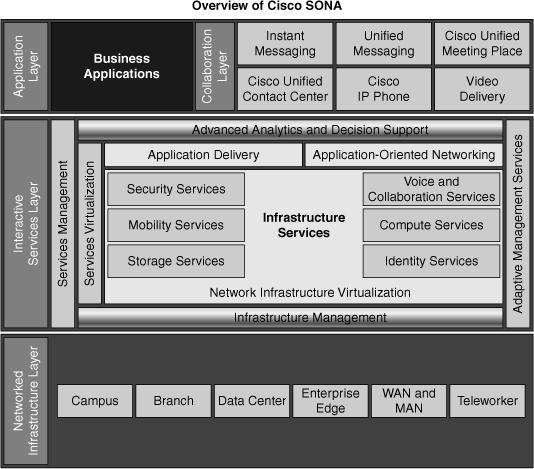
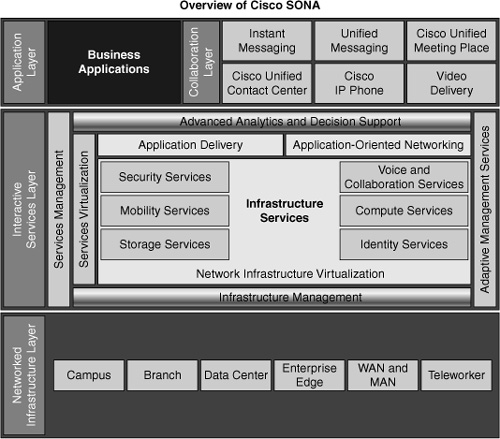
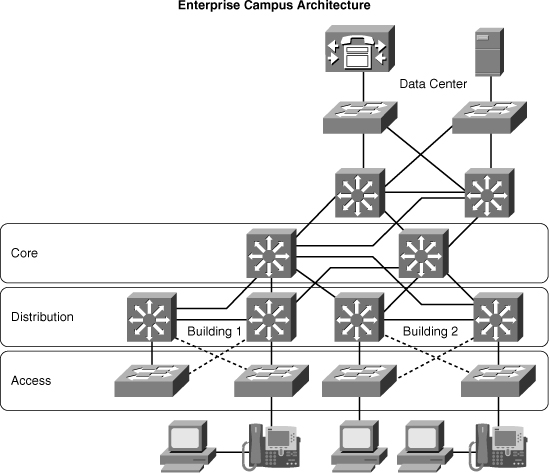
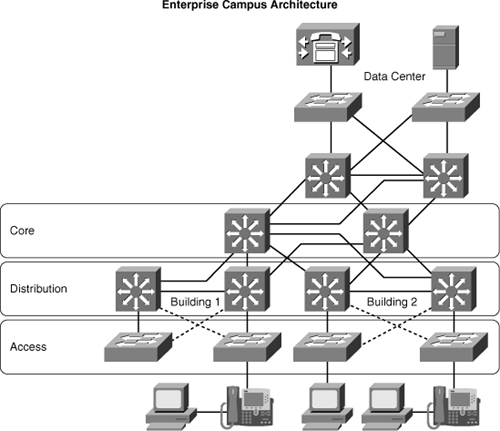
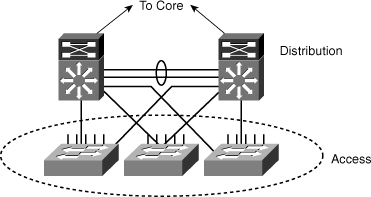
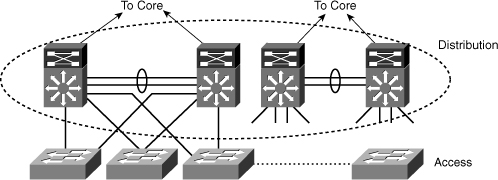
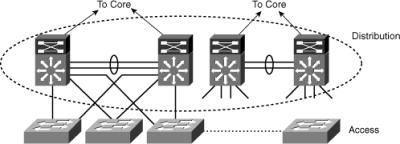
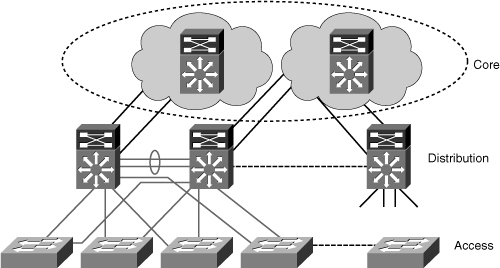
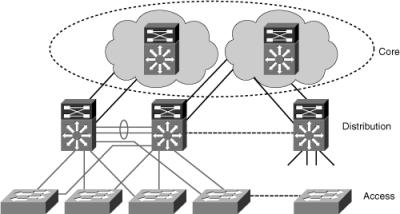
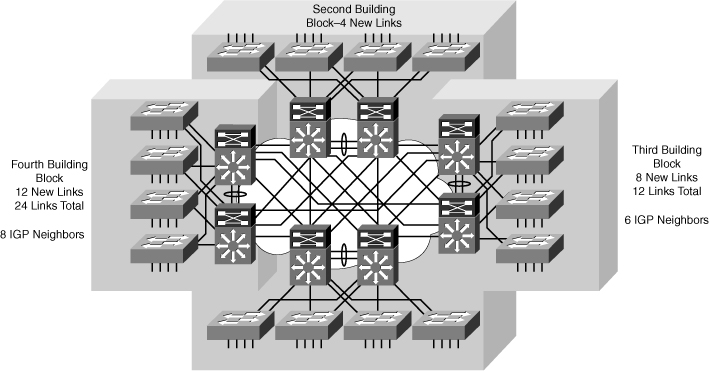
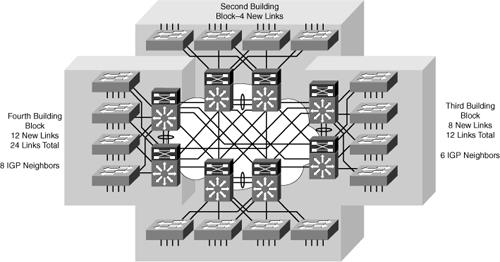

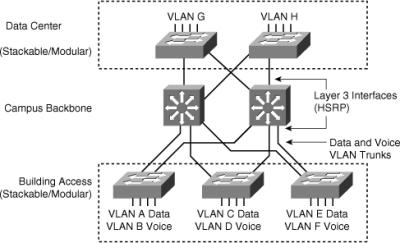
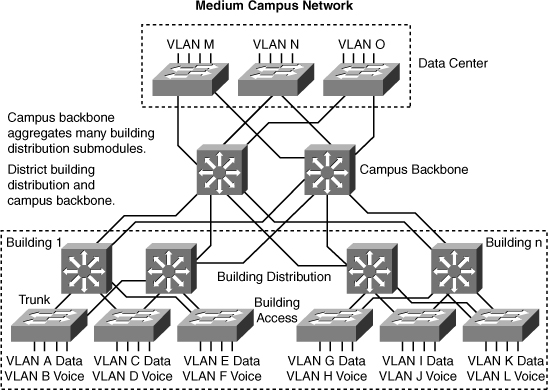
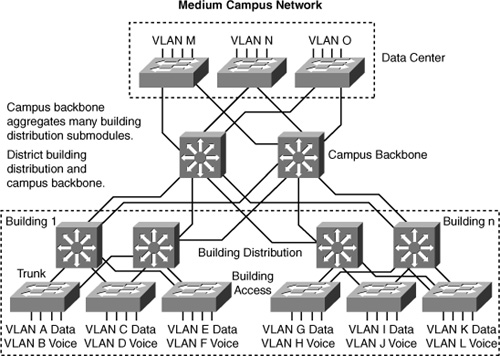
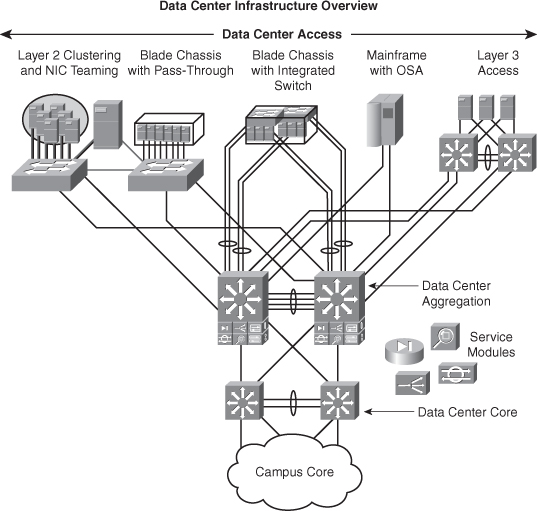
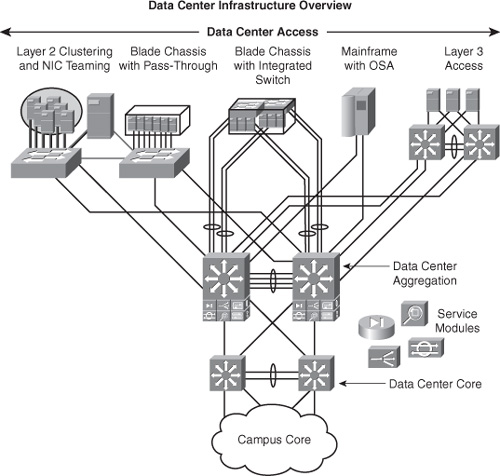
0 comments
Post a Comment